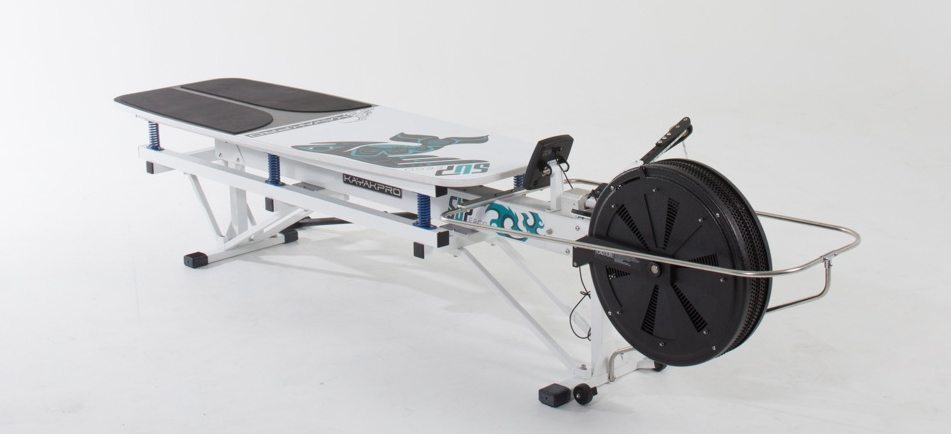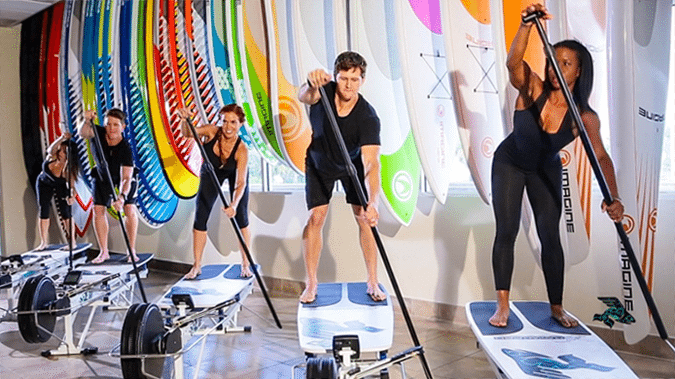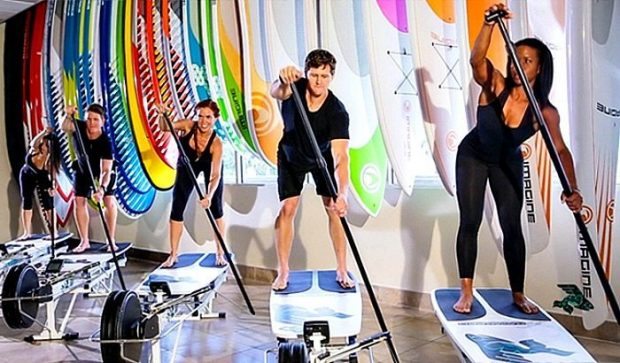
As SUP soars in popularity, fitness pros find ways to make it more accessible to everyone.
If you’re living in a landlocked state, you’re probably thinking that your chances of ever trying stand-up paddle boarding (or SUP) are pretty much nil. Well, you may want to think again. Miami-based SUPtheworkout studio offers indoor classes that simulate being on a stand-up paddleboard—the first studio of its kind that opened in May—with the KayakPro SUP Ergometer machine.
Although the machine isn’t an exact replica of what you’d find on the water, according to studio owner Melina Cherry, it’s pretty close. Cherry herself actually first learned SUP skills on the same machines her students use during classes.
SEE ALSO 5 Things You Need To Know About Stand Up Paddleboarding
So, what exactly does an indoor SUP class look like? Well, first students must take an introductory class during their first visit to familiarize themselves with the machine. Once students feel comfortable, they can progress to the intermediate class that includes a hearty mix of paddling on the machine and circuit training in addition to strength and conditioning exercises. More advanced classes often involve about 35 minutes of paddling, slightly more than the intermediate level.
Cherry says the on-land benefits of indoor SUP translate well once students get on the water.
“They know technique. By the time they get to the water, they look great. You can’t even tell it’s this person’s first time on a board,” she says.

Cherry even recommends that SUP newbies even take an indoor class before getting in the water to help them adjust. Additional benefits include weight loss and injury recovery. Cherry used SUP as a way to rehabilitate her body following a car accident and recommends her students working with injuries do that same. See our article here to read more about the benefits of SUP on the water.
However, students are free to do as they please. She has some students who only go to her studio to work out and have no interest in trying SUP unless it’s on dry land.
But despite’s the sport’s growing popularity, classes haven’t popped up as fast as you might think. Barre studios popped up like weeds once that craze caught on. Whereas when is the last time you heard of a local outfit offering SUP? Probably not that often. One of the reasons why SUP is spreading so slowly is due to costs. According to Cherry, after you’ve purchased a paddleboard, paddle and roof rack to transport it, you’re typically going to be out of about $1,000. Retailers have noticed this trend too, with companies like boatstogo.com even offering inflatable paddleboards starting at $499 to stay competitive.
But cost issues aside, Cherry is confident the future of SUP is solid.
“I wouldn’t be surprised if it we’re in the Olympics in a couple of years,” she says.
And even though she’s one of the few, Cherry is not the only one who has caught on to the waterless SUP trend. Since 2011, the Nashville Paddle Company has offered paddleboard rentals in the landlocked state of Tennessee. FloorTime Studios in Rhode Island is even offering indoor SUP yoga classes.
If you don’t live near the water and have always wanted to try this trend, just wait. You may get a chance sooner than you think—water or not.
For more Fitness, check out our articles here.
Are you a fan of SUP? Would you prefer indoor or outdoor?

Oh snap, this is legit! I tried something a little like this a few months back, but this looks even harder!!